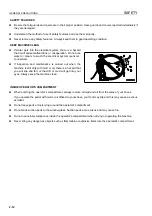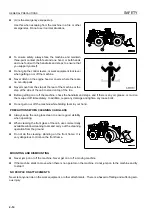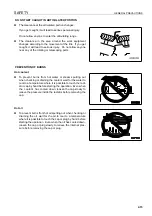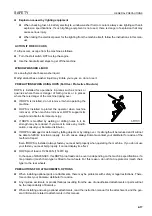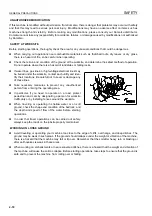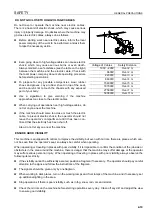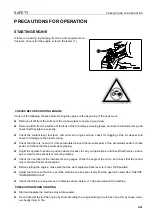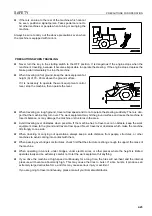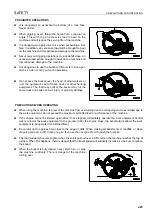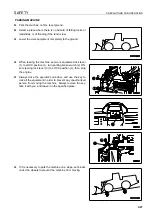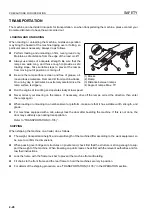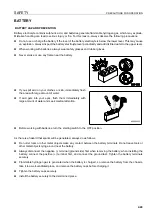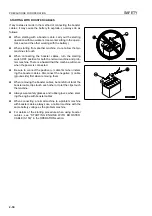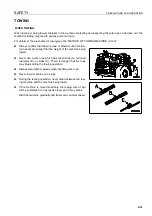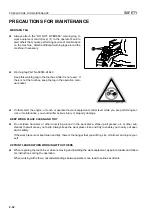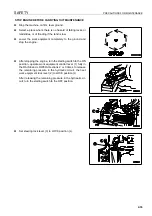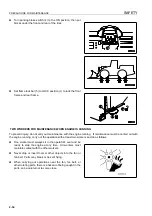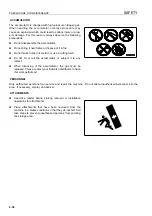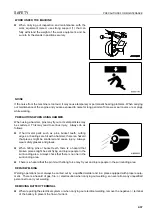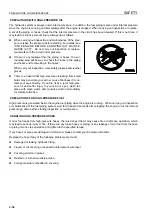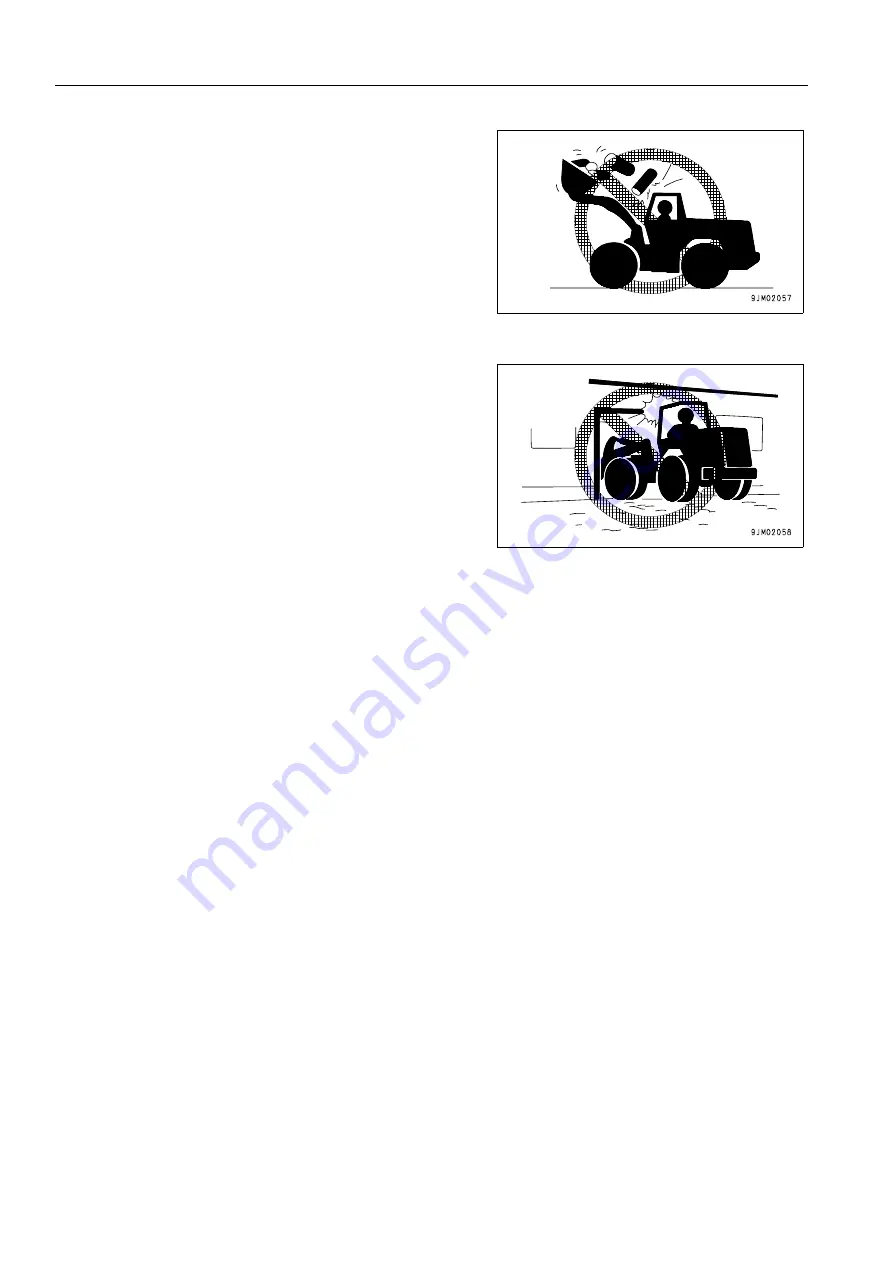
PRECAUTIONS FOR OPERATION
SAFETY
2-26
q
When handling unstable loads, such as round or cylindrical
objects, or piled sheets, if the work equipment is raised
high, there is danger that the load may fall on top of the
operator' compartment and cause serious injury or dam-
age.
q
When handling unstable loads, be careful not to raise the
work equipment too high or tip the bucket back too much.
q
If the work equipment is suddenly lowered or suddenly
stopped, the reaction may cause the machine to tip over.
Particularly when carrying a load, be sure to operate the
work equipment carefully.
q
When operating in tunnels, under bridges, under electric
wires, or other places where the height is limited, be
extremely careful not to let the work equipment hit any-
thing.
q
To prevent accidents caused by hitting other objects,
always operate the machine at a speed which is safe for
operation, particular in confined spaces, indoors, and in
places where there are other machines.
METHODS OF USING BRAKE
q
When the machine is traveling, do not rest your foot on the brake pedal. If you travel with your foot resting on
the pedal, the brake will always be applied, and this will cause the brakes to overheat and fail.
q
Do not depress the brake pedal repeatedly if not necessary.
q
When traveling downhill, use the braking force of the engine, and always use the right brake pedal at the same
time.
OPERATE CAREFULLY ON SNOW
q
Snow-covered or frozen surfaces are slippery, so be extremely careful when traveling or operating the
machine, and do not operate the levers suddenly. Even a slight slope may cause the machine to slip, so be
particularly careful when working on slopes.
q
With frozen ground surfaces, the ground becomes soft when the temperature rises, and this may cause the
machine to tip over.
q
If the machine enters deep snow, there is a hazard that it may tip over or become buried in the snow. Be care-
ful not to leave the road shoulder or to get trapped in a snow drift.
q
When clearing snow, the road shoulder and objects placed beside the road are buried in the snow and cannot
be seen. There is a hazard of the machine tipping over or hitting covered objects, so always carry out opera-
tions carefully.
q
When traveling on snow-covered roads, always fit tire chains.
q
When traveling on snow-covered slopes, never apply the foot brake suddenly. Reduce the speed and use the
engine as a brake while applying the foot brake intermittently (depress the brake intermittently several times).
If necessary, lower the bucket to the ground to stop the machine.
Summary of Contents for WA800-3E0
Page 2: ......
Page 3: ...FOREWORD 11...
Page 27: ...SAFETY SAFETY LABELS 2 5 LOCATION OF SAFETY LABELS 2...
Page 66: ...GENERAL VIEW OPERATION 3 4...
Page 84: ...EXPLANATION OF COMPONENTS OPERATION 3 22 SWITCHES 3...
Page 224: ...TROUBLESHOOTING OPERATION 3 162...
Page 309: ...SPECIFICATIONS 15...
Page 330: ...HANDLING MACHINES EQUIPPED WITH VHMS ATTACHMENTS OPTIONS 6 20...
Page 331: ...INDEX 17...
Page 332: ...INDEX 7 2...
Page 335: ...COLOPHON 18...

